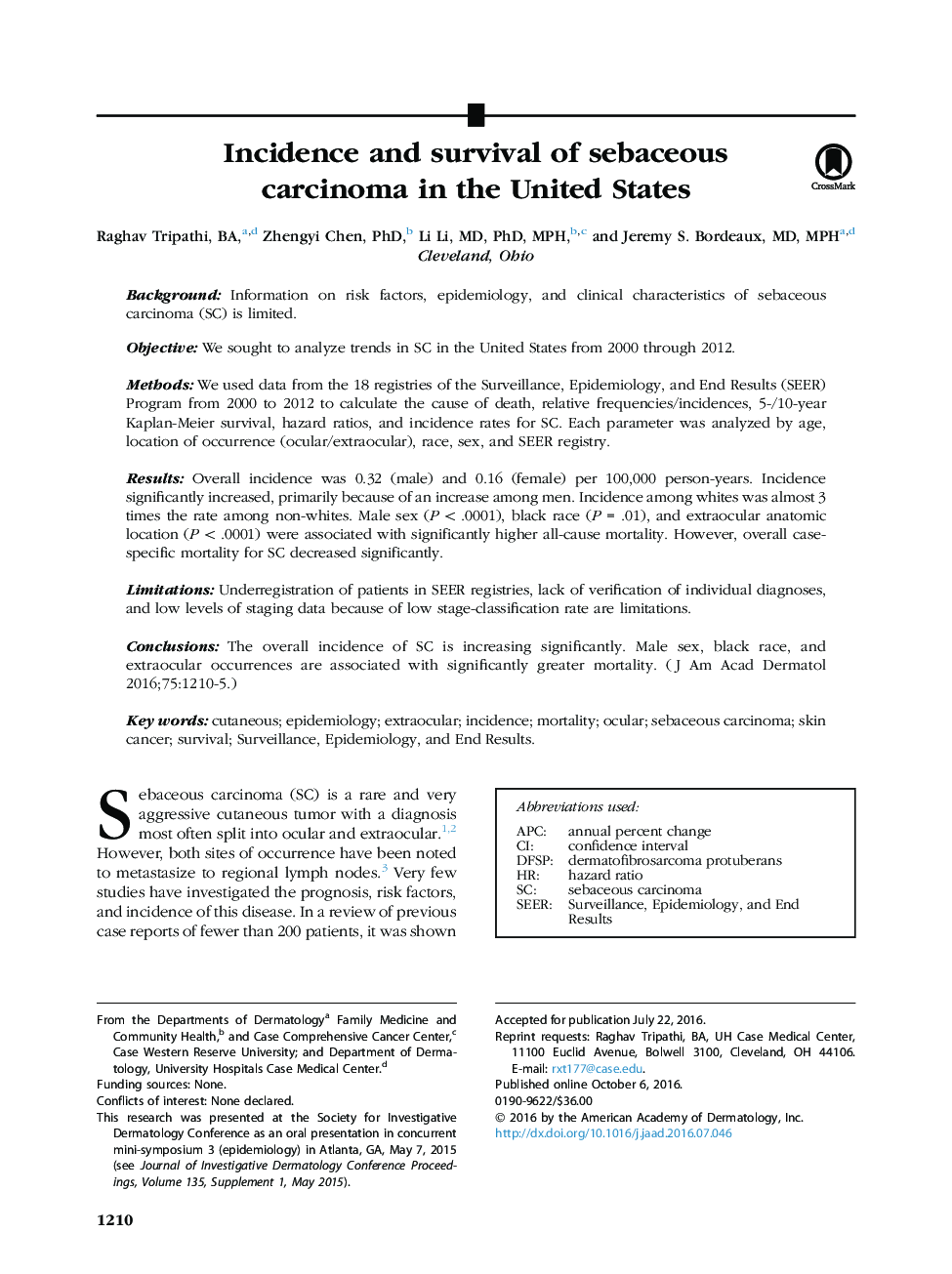| Article ID | Journal | Published Year | Pages | File Type |
|---|---|---|---|---|
| 5648200 | Journal of the American Academy of Dermatology | 2016 | 6 Pages |
BackgroundInformation on risk factors, epidemiology, and clinical characteristics of sebaceous carcinoma (SC) is limited.ObjectiveWe sought to analyze trends in SC in the United States from 2000 through 2012.MethodsWe used data from the 18 registries of the Surveillance, Epidemiology, and End Results (SEER) Program from 2000 to 2012 to calculate the cause of death, relative frequencies/incidences, 5-/10-year Kaplan-Meier survival, hazard ratios, and incidence rates for SC. Each parameter was analyzed by age, location of occurrence (ocular/extraocular), race, sex, and SEER registry.ResultsOverall incidence was 0.32 (male) and 0.16 (female) per 100,000 person-years. Incidence significantly increased, primarily because of an increase among men. Incidence among whites was almost 3 times the rate among non-whites. Male sex (PÂ <Â .0001), black race (PÂ =Â .01), and extraocular anatomic location (PÂ <Â .0001) were associated with significantly higher all-cause mortality. However, overall case-specific mortality for SC decreased significantly.LimitationsUnderregistration of patients in SEER registries, lack of verification of individual diagnoses, and low levels of staging data because of low stage-classification rate are limitations.ConclusionsThe overall incidence of SC is increasing significantly. Male sex, black race, and extraocular occurrences are associated with significantly greater mortality.
